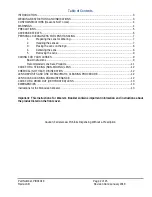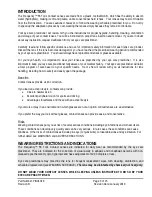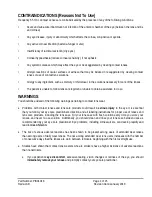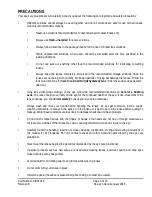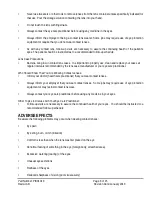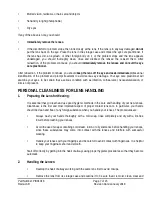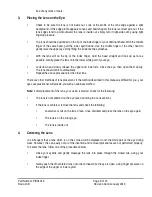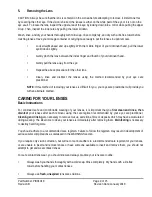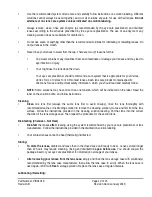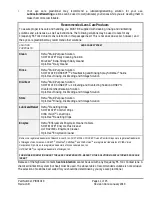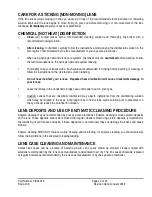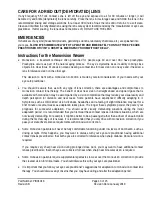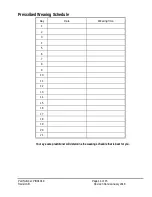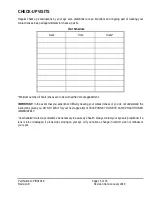
Part Number: PIB01018
Page 5 of 15
Revision B
Revision Date: January 2018
PRECAUTIONS
Your eye care practitioners will carefully instruct you about the following care regimen and safety precautions:
•
Different solutions cannot always be used together, and not all solutions are safe for use with all lenses.
Use only recommended solutions.
•
Never use solutions recommended for conventional hard contact lenses only.
•
Always use fresh, unexpired lens care solutions.
•
Always follow directions in the package inserts for the use of contact lens solutions.
•
Sterile unpreserved solutions, when used, should be discarded after the time specified in the
labeling directions.
•
Do not use saliva or anything other than the recommended solutions for lubricating or wetting
lenses.
•
Always keep the lenses completely immersed in the recommended storage solutions when the
lenses are not being worn (stored). Prolonged periods of drying will damage the lenses. Follow the
lens care directions for Care for a Dried Out (dehydrated) Lens if the lens surface does become
dried out.
•
If the lens sticks (stops moving) on the eye, follow the recommended directions on Care for a Sticking
Lens. The lens should move freely on the eye for the continued health of the eye. If non-movement of the
lens continues, you should immediately consult your eye care practitioner.
•
Always wash and rinse your hands before handling the lenses. Do not get cosmetics, lotions, soaps,
creams, deodorants, or sprays in the eyes or on the lenses. It is best to put on the lenses before putting on
makeup. Water base cosmetics are less likely to damage lenses than oil base products.
•
Do not touch contact lenses with the fingers or hands if the hands are not free of foreign materials, as
microscopic scratches of the lenses may occur, causing distorted vision and/or injury to the eye.
•
Carefully follow the handling, insertion, removal, cleaning, disinfection, storing and wearing instructions in
this manual for all Frequency 55 Toric Contact Lenses and other instruction prescribed by the eye care
practitioner.
•
Never wear the lenses beyond the period recommended by the eye care practitioner.
•
If aerosol products such as hair spray, are used while wearing lenses, exercise caution and keep eyes
closed until the spray has settled.
•
Avoid all harmful or irritating vapors and fumes while wearing lenses.
•
Do not swim with your lenses in place.
•
Inform the doctor (health care practitioner) about being a contact lens wearer.


